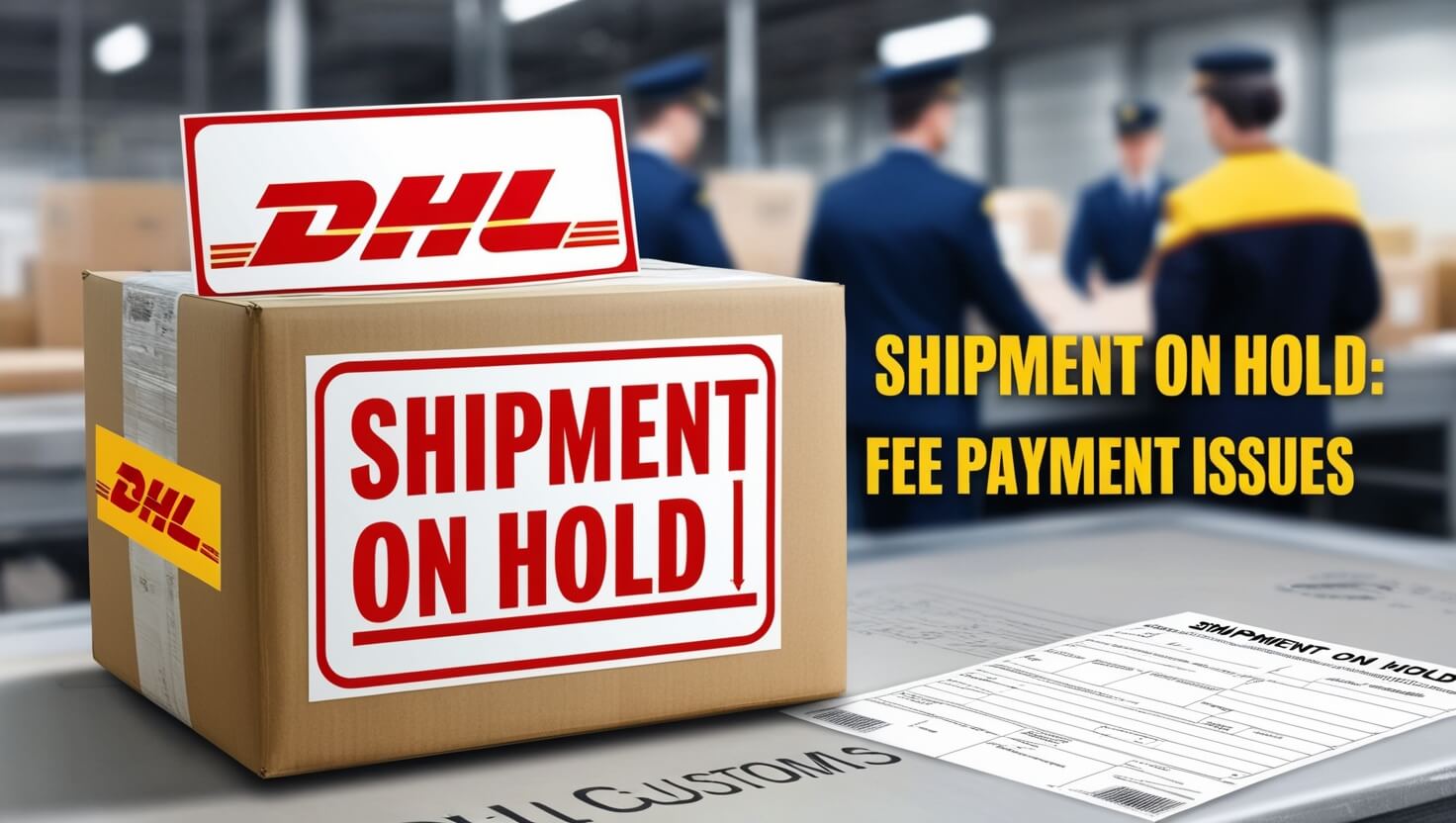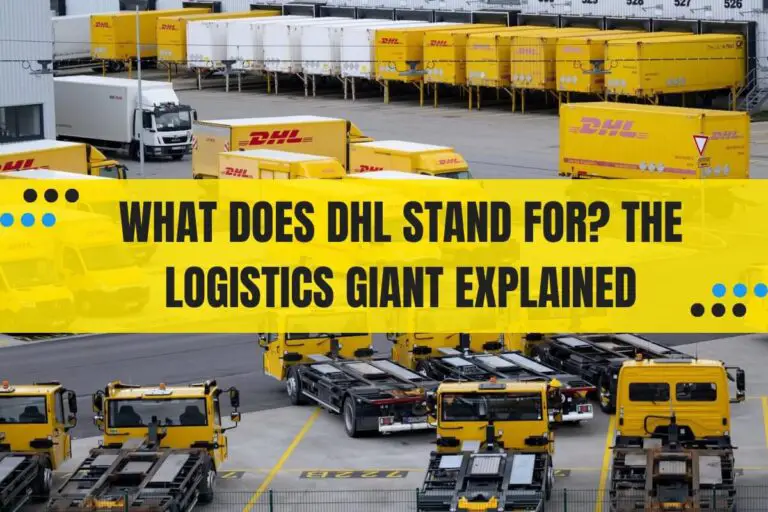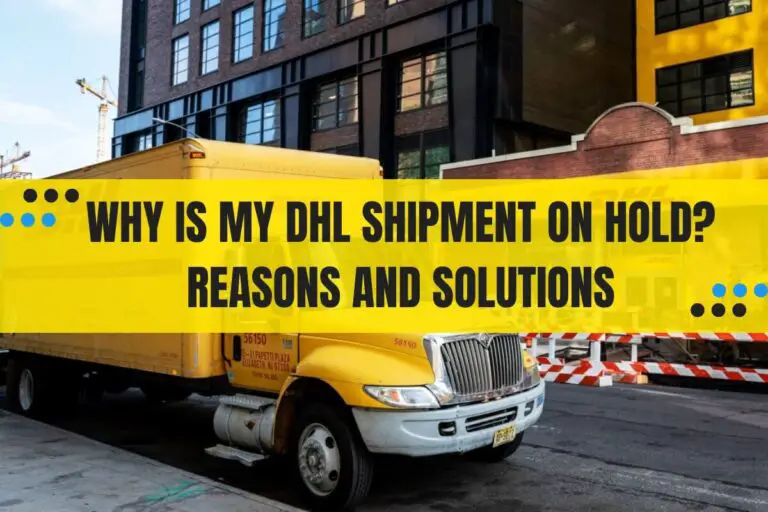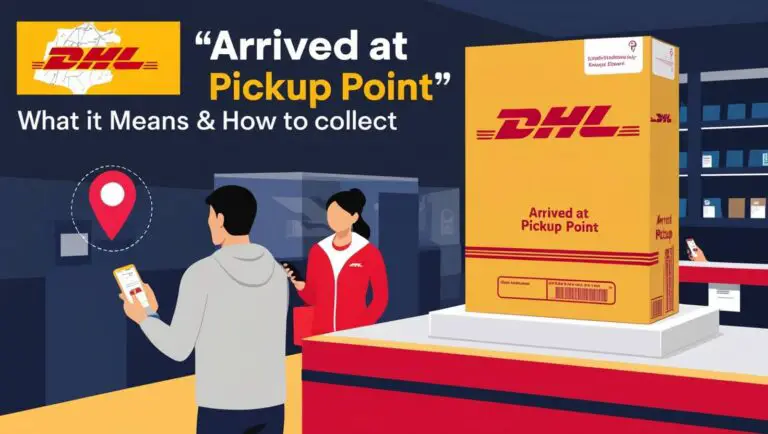DHL Shipment on Hold: Understanding Fee Payment Issues

Tracking your DHL package and seeing “On hold awaiting for payment of shipment related fees” can be confusing. This means your package is stuck until you pay some fees. Your package needs these fees paid to keep moving. We’ll explain this status, its causes, and what to do next.
What Does “On Hold Awaiting for Payment of Shipment Related Fees” Mean?
When you see this status, it’s natural to feel confused or worried. Let’s break it down to understand what’s really going on with your shipment.
Breaking Down the DHL Tracking Status
The phrase “on hold awaiting for payment of shipment related fees” is DHL’s way of saying your package has reached a checkpoint where certain fees need to be paid. These fees are often related to customs, duties, or taxes. Until these fees are settled, your package won’t move forward in its journey to you.
Common Reasons for Shipment Holds
Several factors can trigger this hold status:
- International shipping fees
- Customs duties and taxes
- Additional handling charges
- Incomplete or incorrect paperwork
Sometimes, the hold occurs because the sender didn’t include these fees in the original shipping cost. Other times, it’s due to the specific regulations of the destination country.
Shipment-Related Fees Explained
To better handle this situation, it’s crucial to understand the types of fees you might encounter and why they occur.
Types of Fees You May Encounter
- Customs duties: Taxes imposed by the government on imported goods
- Import taxes: Additional taxes based on the value of your item
- Handling fees: Charges for processing your package through customs
- Storage fees: If your package is held for an extended period
Why These Fees Occur
These fees exist to regulate international trade, protect domestic industries, and generate revenue for governments. The exact amount often depends on the item’s value, type, and your country’s specific import rules.
How to Handle a Shipment on Hold
Now that we understand why your shipment is on hold, let’s look at what you can do about it.
Steps to Take When Your Package is Held
- Check your email: DHL often sends notifications about required payments.
- Visit DHL’s website: Look up your tracking number for more details.
- Calculate the fees: Use DHL’s duty calculator tool if available.
- Make the payment: Follow DHL’s instructions to pay online or through other methods.
- Keep proof of payment: Save your receipt in case of any issues.
Contacting DHL Customer Service
If you’re unsure about the fees or the process, don’t hesitate to contact DHL. Their customer service can provide:
- Detailed explanations of the charges
- Guidance on how to pay
- Estimates on when your package will be released after payment
Remember, clear communication can often resolve issues quickly.
Preventing Future Shipment Holds
While you can’t always avoid shipment holds, there are steps you can take to minimize their occurrence.
International Shipping Regulations
Before shipping internationally:
- Research the import rules of the destination country
- Check if there are restrictions on the items you’re sending
- Understand the value thresholds for duties and taxes
Preparing for Potential Fees
To avoid surprises:
- Ask the sender to include all potential fees in the shipping cost
- Set aside a budget for possible additional charges
- Consider using DHL’s prepaid duties and taxes service if available
Being proactive can save you time and reduce stress in the long run.
The Impact of “On Hold” Status on Delivery Times
When your shipment is held for fee payment, it naturally affects your delivery timeline.
Typical Delay Durations
The length of the delay can vary:
- Quick payment: 1-2 business days
- Payment verification issues: 3-5 business days
- Complex customs cases: Up to 2 weeks
These are estimates, and actual times may differ based on various factors.
Factors Affecting Release Time
Several elements influence how quickly your package moves after payment:
- Speed of payment processing
- Customs office workload
- Completeness of shipment documentation
- Type and value of the shipped items
Delays can be annoying, but they help make sure international shipping follows the rules. Stay patient. These checks are normal when sending packages across borders.
Customs Clearance and Its Role in Shipment Holds
Customs clearance plays a crucial role in international shipping. Understanding this process can help you navigate shipment holds more effectively.
The Customs Process Explained
When your package arrives in a new country, it goes through these steps:
- Document review: Customs officers check the paperwork
- Physical inspection: Sometimes, packages are opened and examined
- Fee assessment: If applicable, duties and taxes are calculated
- Release decision: The package is either cleared or held for further action
This process ensures that all items entering the country comply with local laws and regulations.
Required Documentation for Smooth Clearance
To help your package clear customs quickly:
- Accurate customs declaration: Describe items correctly and state their true value
- Commercial invoice: For business shipments, this details the transaction
- Proof of origin: Some countries require this for certain products
- Any specific permits or certificates: Needed for restricted items
Having all the right paperwork can significantly reduce the chance of your shipment being held.
Frequently Asked Questions About Shipment Holds
Let’s address some common concerns about shipments on hold for fee payment.
Who is responsible for paying these fees?
Usually, the receiver (you) is responsible, unless the sender has agreed to cover them.
Can I refuse to pay the fees?
Yes, but your package will likely be returned to the sender or potentially destroyed.
What if I think the fees are incorrect?
Contact DHL customer service. They can review the charges and help resolve any discrepancies.
How long will DHL hold my package?
Typically, DHL holds packages for up to 5 business days before returning them to the sender.
Troubleshooting Persistent Issues
If you’re facing ongoing problems with held shipments:
- Double-check all shipping information for accuracy
- Communicate clearly with your sender about including all fees upfront
- Consider using a customs broker for complex or high-value shipments
- Look into DHL’s premium services that handle customs clearance
Remember, most issues can be resolved with good communication and proper preparation.
Conclusion
Encountering the “on hold awaiting for payment of shipment related fees” status can be frustrating, but it’s a normal part of international shipping. By understanding why it happens, how to handle it, and how to prevent it, you can navigate these situations more smoothly.
Key takeaways:
- The hold status often relates to customs duties, taxes, or handling fees
- Quick payment and proper documentation can minimize delays
- Communication with DHL is crucial for resolving issues
- Preparation and understanding of international shipping rules can prevent future holds
Remember, while shipment holds can be inconvenient, they’re in place to ensure proper international trade practices. With the knowledge you’ve gained from this guide, you’re now better equipped to handle any shipping challenges that come your way.
Stay informed, be prepared, and happy shipping!






